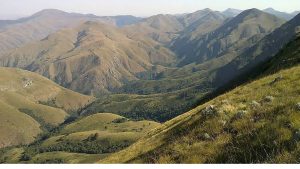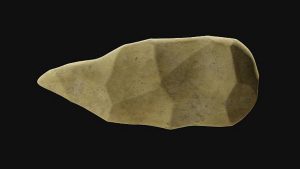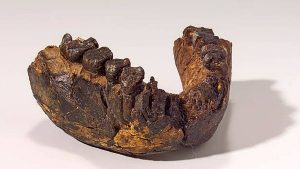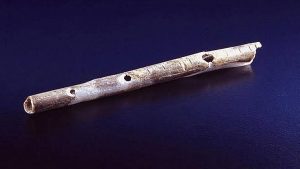Oldest Things On Earth: The age of Earth is around 4.5 billion years. The most of the remnants of the era have been destroyed. The most ancient objects on the world are not connected to humans since humans have only been there for a small portion of that period. For the sake of this list, we decided to include physical inanimate items that fall into a variety of categories, such as artifacts, rocks, fossils, etc.
The oldest items on this list are almost as ancient as the Earth and shed light on the primitive conditions of our planet. Some of the other antiques depict the earliest stages of human culture and civilisation.
Recommended: Best Zoos In The World
Top 8 Oldest Things On Earth
1. Jack Hills Zircon: As far as has been found on Earth, zircon crystals from Australia’s Jack Hills are thought to be the oldest item.

Only 165 million years after the Earth originated, researchers have dated the crystals to a time of around 4.375 billion years ago. The zircons reveal details about the early Earth’s environment.
Zircon trace elements indicate that they originated from granite-like rocks with abundant water. This evidence suggests that the Earth cooled rapidly enough to generate surface water and continental-type rocks quite early in the Earth’s history, according to the geologists who investigated the zircons. This indicates that the early Earth wasn’t as hostile as scientists had previously thought.
2. Hematite Tubes: Researchers unearthed fossils that are about 4 billion years old and represent what are likely the earliest known species on Earth, according to research released in the early months of 2017.

The tiny hematite tubes found in the fossils resemble the structures created by contemporary bacteria that live close to hydrothermal vents. According to the researchers, the fossils also contain the chemistry generally present around living things, including a significant amount of carbon and phosphorus.
These fossils demonstrate that life first evolved early in Earth’s history if their discoveries can be demonstrated beyond a reasonable doubt. Despite the fact that the research appears promising, several scientists worry that the fossils are being misconstrued or aren’t as ancient as the researchers assume.
See Also: Causes and Consequences of Indiscipline in the Society
3. Stromatolites: Layered rocks called stromatolites or stromatoliths are created from the fossilized remains of cyanobacteria, which are blue-green-colored microorganisms.

The oldest stromatolites, which date back to around 3.5 billion years, are the earliest known signs of life and would have been the first observable species on Earth.
Despite the fact that stromatolites are still alive and well in some regions of the earth today, roughly a billion years ago they vanished from the fossil record. Stromatolites were widespread in the world before this.
According to recent study from 2013, foraminifera, a single-celled creature, invaded the stromatolites. As a result, the stromatolites changed into throbolites, which lack the delicate layers of stromatolites and have clumpy, untidy layers in their place.
4. Makhonjwa Mountains: The Makhonjwa Mountains, the world’s oldest mountain range, have been nicknamed the “Genesis of Life.”

The mountains are a treasure trove, including the oldest gold ever discovered as well as some of the oldest fossils, some of which show the earliest evidence of life on Earth.
Guinness World Records even declares the Makhonjwa Mountains to be the oldest mountain range in existence.
The Makhonjwa Mountains were added to UNESCO’s list of World Heritage Sites at the beginning of July 2018. The choice was decided at the 42nd meeting of the Bahrain-based UNESCO World Heritage Committee.
The Baberton Greenstone Belt, one of the oldest geological formations in the world, is made up of around 40% of the Makhonjwa Mountains, which are also the oldest mountain range.
5. Lake Zaysan: Although Lake Baikal is sometimes cited as the world’s oldest lake, Lake Zaysan is roughly 40 million years older and is thought to have developed between 145 and 66 million years ago, during the Cretaceous era.

Although the lake’s great age is commonly acknowledged, its precise age has proven difficult to determine; it may be much older than 65 million years.
In Kazakhstan, this historic lake is situated next to a number of man-made reservoirs including the Bukhtarma dam. Lake Zaysan ascended around 6 meters (20 feet) above its original level as a result of the dam’s construction.
This expanded the size of Lake Zaysan, and some sources identify the lake as one of the man-made reservoirs.
Must Read: How To Study Smarter Not Harder
6. Lomekwi Stone Tools: The earliest tools ever unearthed on Earth were uncovered at the Lomekwi archaeological site in Kenya. About 20 distinct artifacts from Lomekwi, including anvils, cores, and flakes, have been discovered by archaeologists.

The tools were dated to 3.3 million years old, which is 500,000 years earlier than the first humans. It is thought that early human ancestors like Australopithecus or Kenyanthropus may have employed the tools.
Prior to the discovery of the Lomekwi artifacts, the oldest stone tools, which date back to around 2.6 million years ago and were discovered in Ethiopia, were most likely created by our earliest hominin relatives, Homo habilis.
The Lomekwi implements, according to researchers, demonstrate that toolmaking was not simply a human trait but that other hominid species also had the ability to make and use tools.
7. UR 501 Jawbone: Around 2.5 million years ago, the earliest hominids (early human ancestors from the genus Homo) initially emerged.

The oldest human fossil, referred to as UR 501, is a jawbone from a member of the Homo rudolfensis species and is thought to be between 2.5 and 2.3 million years old.
Early human remains had never been found in Central Africa before the discovery of UR 501. The discovery of the jawbone in Malawi indicates that a migratory route across the East African rift system may have existed.
According to some scholars, early Homo developed from a smaller-brained australo-pithecine in East Africa around 2.5 million years ago, and the change may have been precipitated by a reduction in global temperature.
8. Geisenklösterle Flutes: Humans went through a cultural boom about 50,000 years ago that gave rise to new types of art, jewelry, music, and other activities.

The earliest actual musical instruments date back to approximately the period of the cultural boom, while experts think that the human voice was likely the first instrument.
The oldest musical instruments ever unearthed that can be categorically classified as instruments are the flutes from Geisenklösterle Cave.
These flutes, which were carbon dated to be between 42,000 and 43,000 years old, were crafted from bird bone and mammoth ivory. According to scientists, flutes and other early instruments were employed in ceremonies or for amusement.
Recommended: Three Arms of Government and Their Functions
Conclusion: A lot of the times when people think of ancient artifacts, they picture Greek or Roman tools and relics. Things like oxidized copper trinkets, ivory statues, or maybe a bit of gold jewelry.
But once you start thinking in archeological terms, a whole world of possibilities open up that pre date recorded history. Now we know that some of the oldest objects in the world are actually much older than anything you would typically see in a museum.

Edeh Samuel Chukwuemeka, ACMC, is a lawyer and a certified mediator/conciliator in Nigeria. He is also a developer with knowledge in various programming languages. Samuel is determined to leverage his skills in technology, SEO, and legal practice to revolutionize the legal profession worldwide by creating web and mobile applications that simplify legal research. Sam is also passionate about educating and providing valuable information to people.